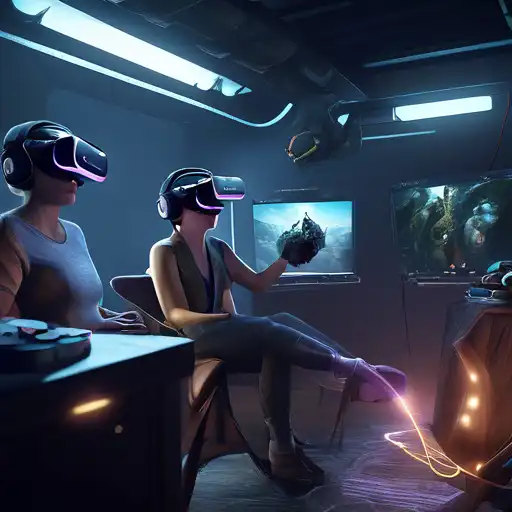Introduction to Virtual Reality
Virtual Reality (VR) has transformed the way we interact with digital content, offering unparalleled immersive experiences. From gaming to education, VR's applications are vast and varied. This guide will walk you through the essentials of creating captivating VR experiences that engage and amaze your audience.
Understanding the Basics of VR
Before diving into VR development, it's crucial to grasp the foundational elements that make VR unique. These include 3D environments, user interaction, and the hardware that brings it all to life. Understanding these components is the first step toward creating immersive experiences.
Choosing the Right Tools and Platforms
Selecting the appropriate development tools is vital for VR creation. Popular platforms like Unity and Unreal Engine offer robust support for VR projects, providing developers with the necessary resources to build interactive 3D worlds. Additionally, consider the target hardware, whether it's Oculus Rift, HTC Vive, or mobile VR solutions like Google Cardboard.
Designing for Immersion
Immersion is the hallmark of a great VR experience. To achieve this, focus on creating detailed environments, realistic interactions, and a compelling narrative. Pay attention to user comfort, ensuring that movements and transitions are smooth to prevent motion sickness.
Optimizing Performance
VR applications demand high performance to maintain immersion. Optimize your projects by reducing polygon counts, using efficient lighting techniques, and minimizing load times. Performance optimization ensures a seamless experience across different hardware specifications.
Testing and Iteration
Testing is a critical phase in VR development. Gather feedback from users to identify areas for improvement. Iteration based on user input can significantly enhance the final product, making it more engaging and user-friendly.
Publishing and Marketing Your VR Experience
Once your VR project is ready, consider the best platforms for publishing. SteamVR, Oculus Store, and other VR marketplaces can help you reach a wide audience. Effective marketing strategies, including social media promotion and demo videos, can increase visibility and attract users.
Conclusion
Creating immersive VR experiences requires a blend of technical skills, creativity, and attention to detail. By following this guide, you're well on your way to developing VR content that captivates and entertains. Remember, the key to success in VR is continuous learning and adaptation to new technologies and trends.
For more insights into VR development, check out our VR Development Tips article.
